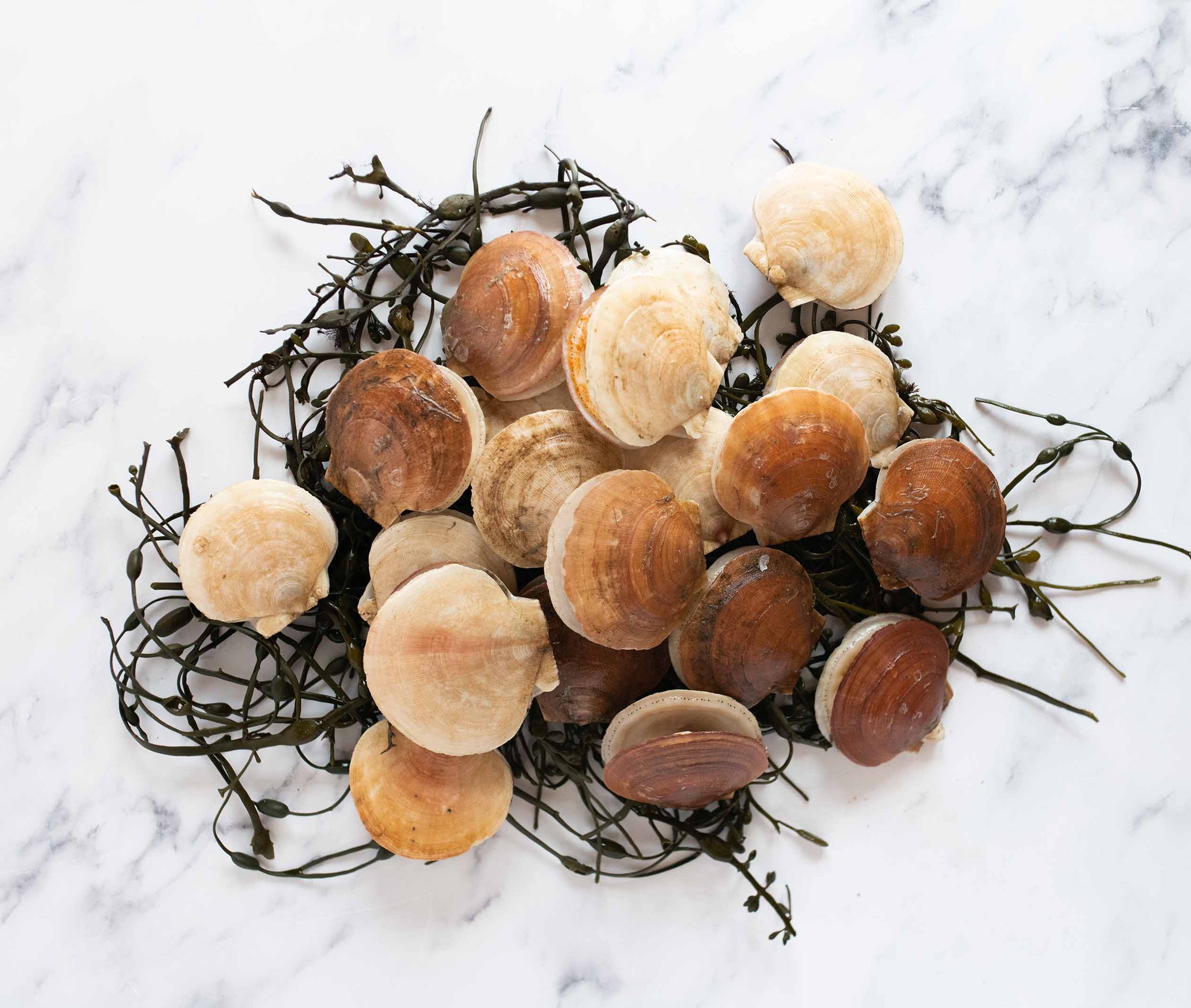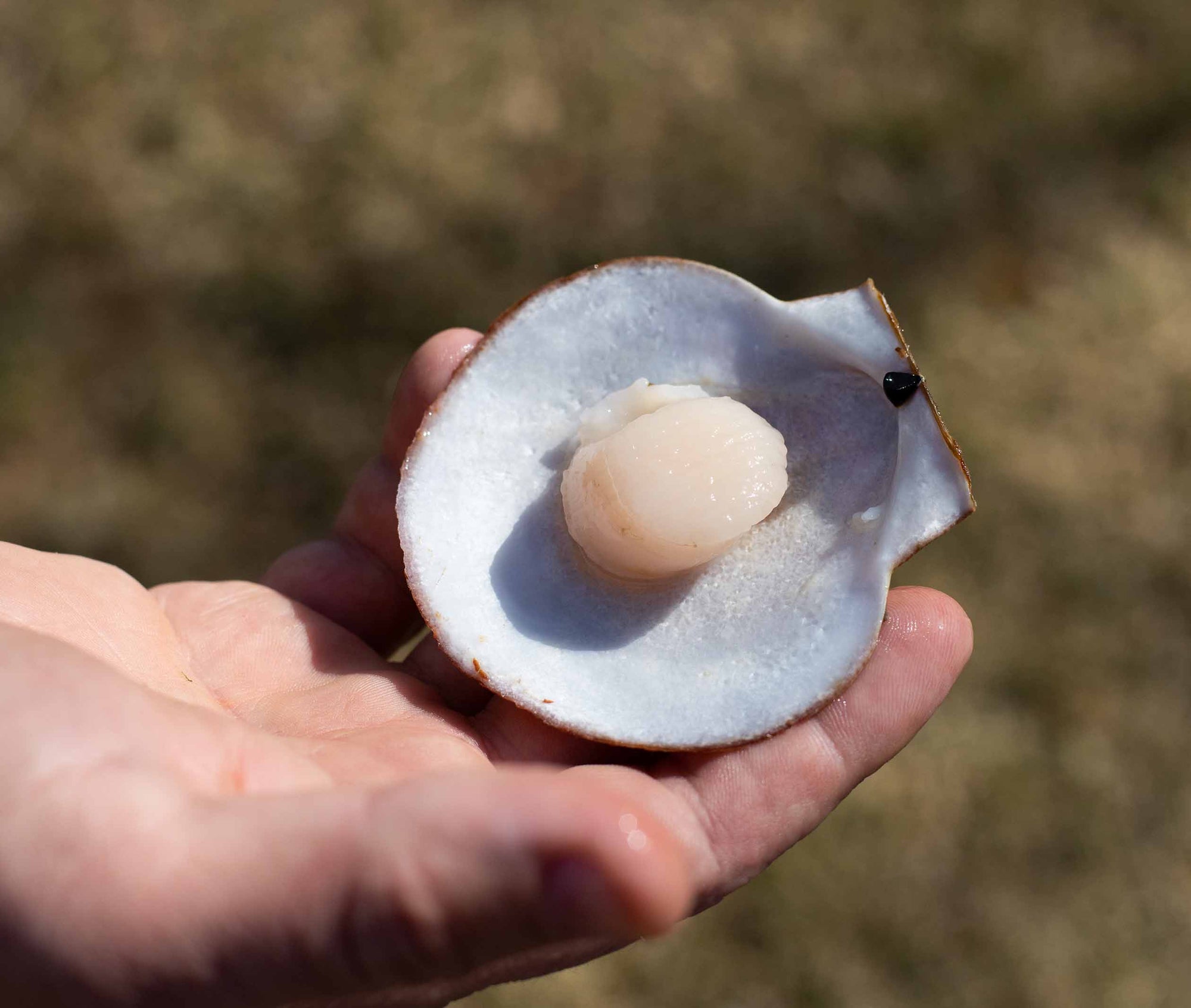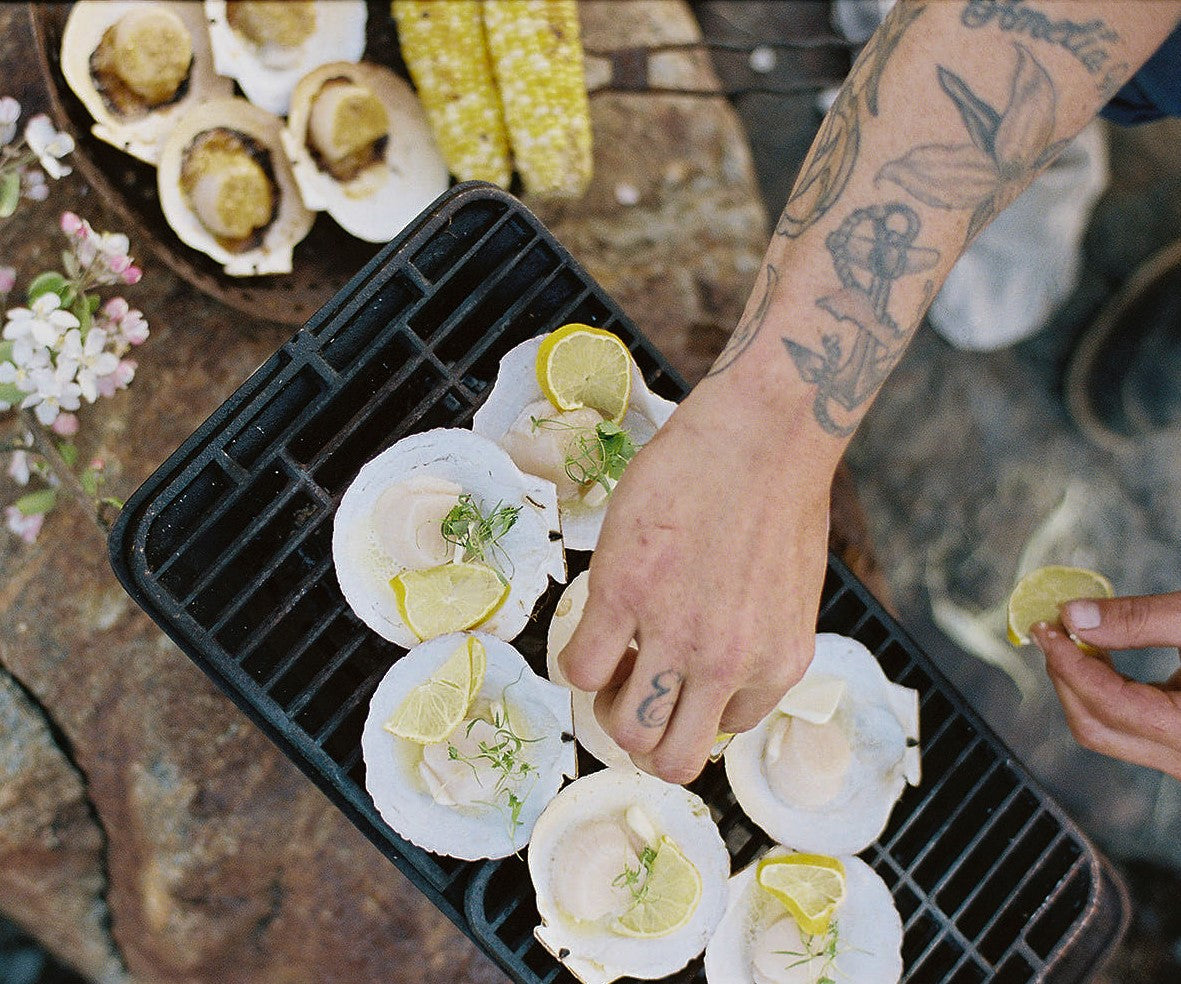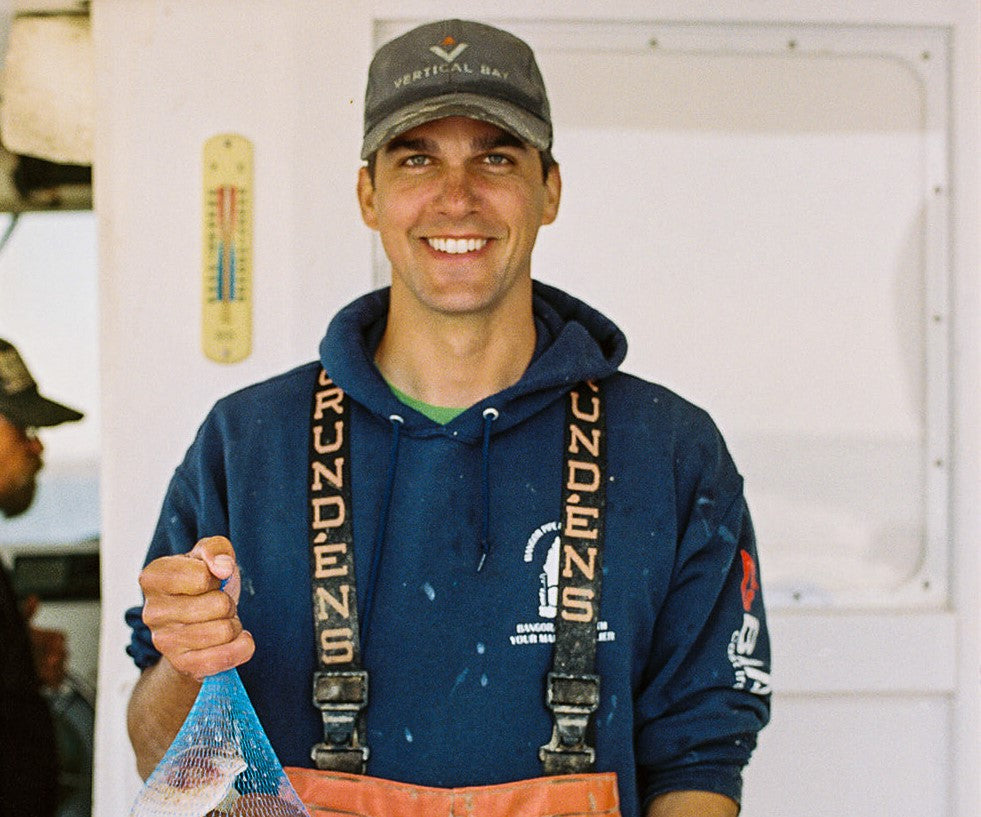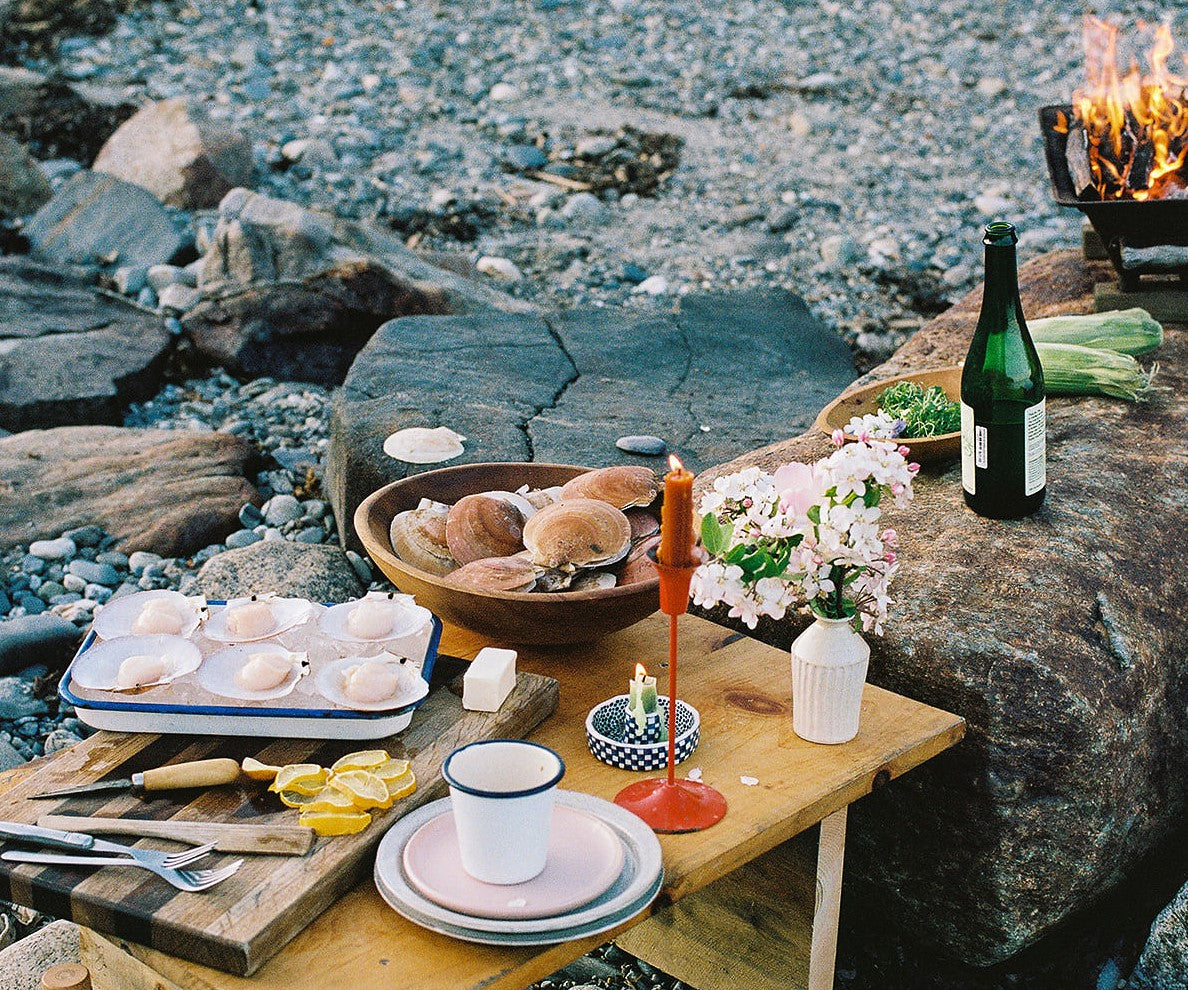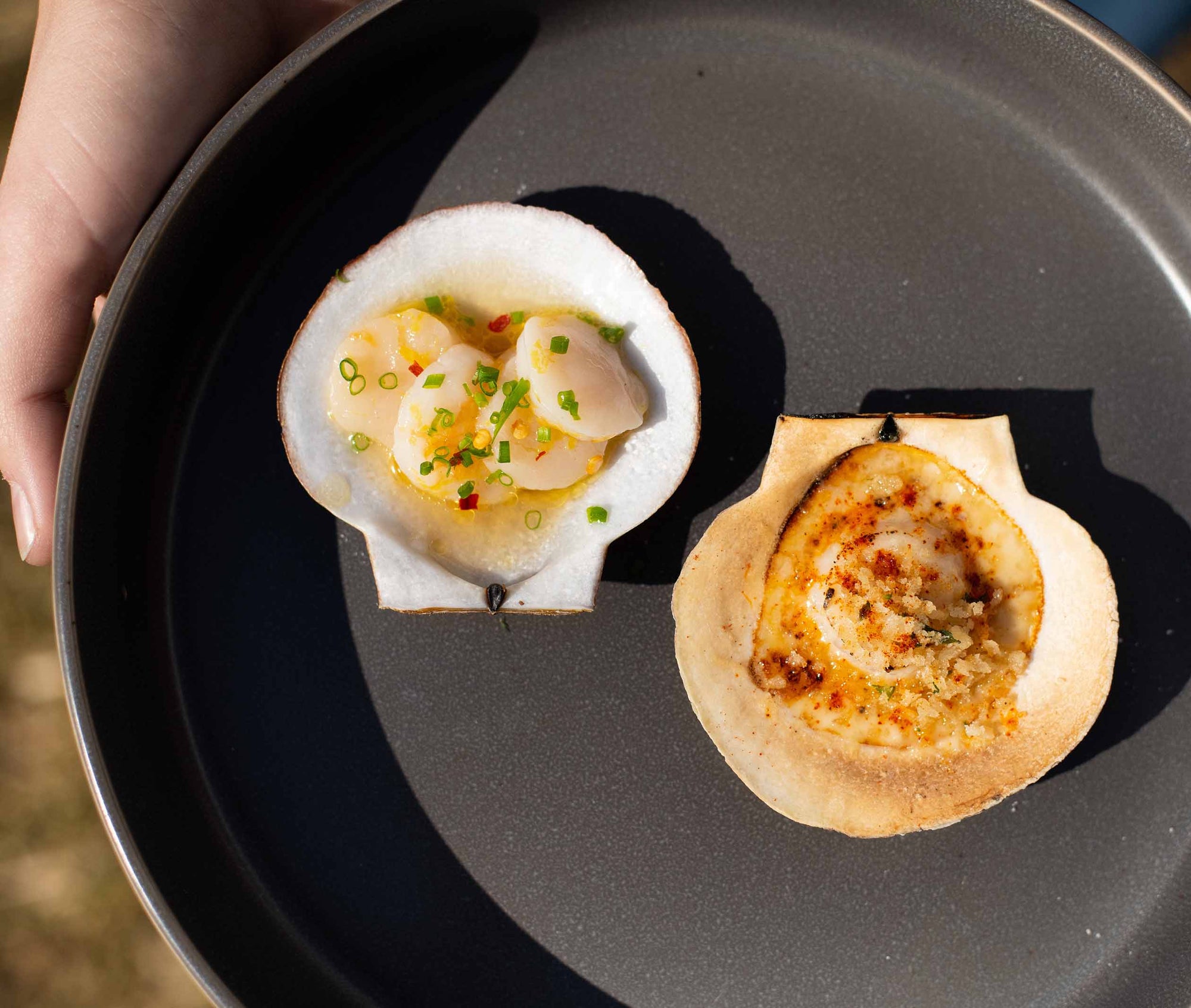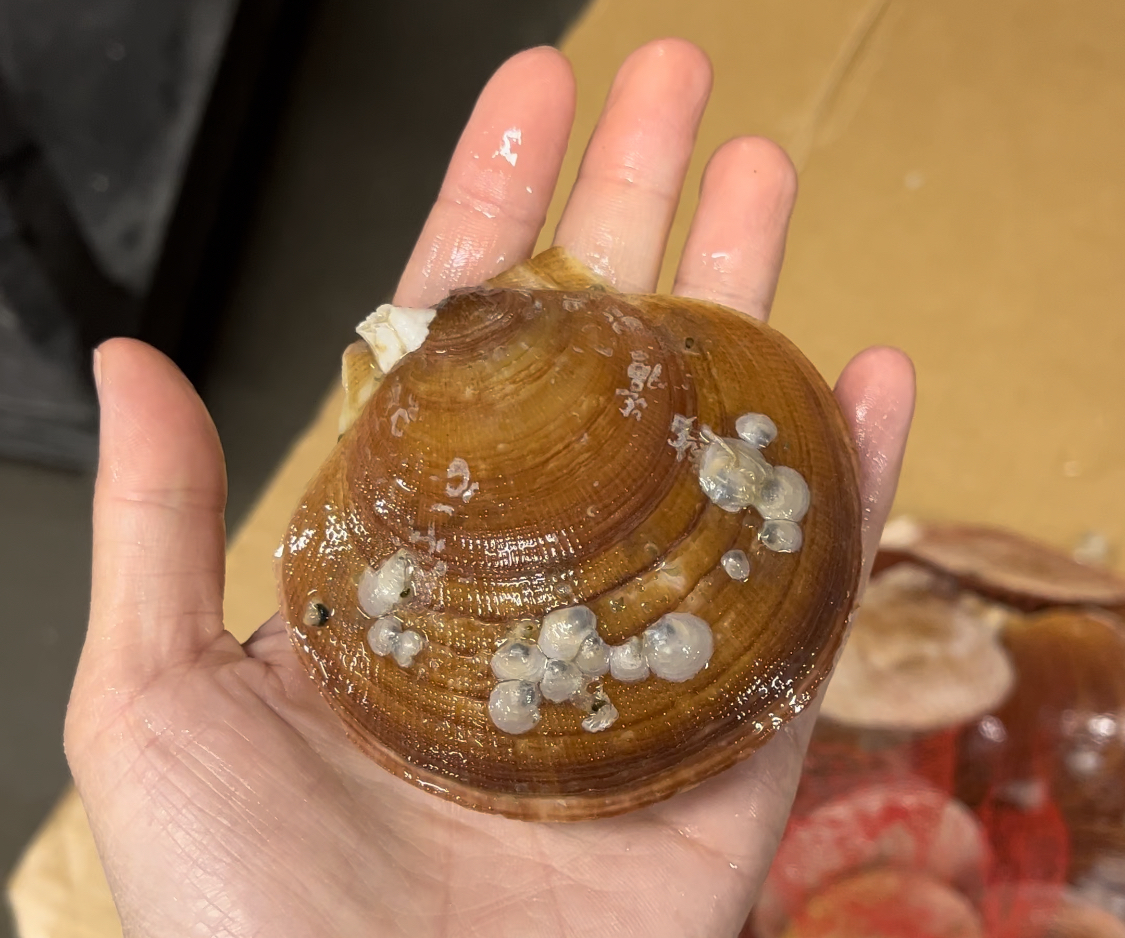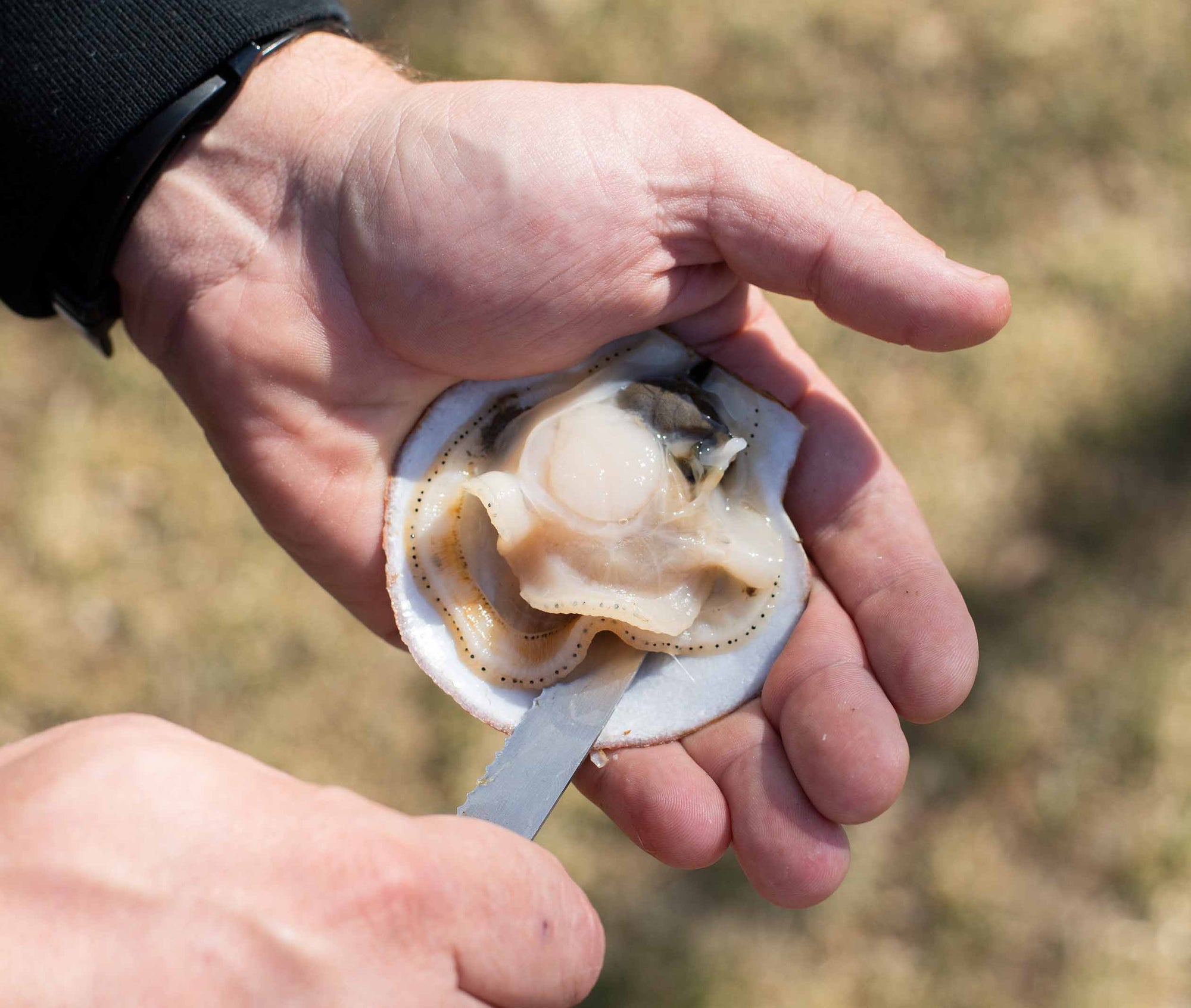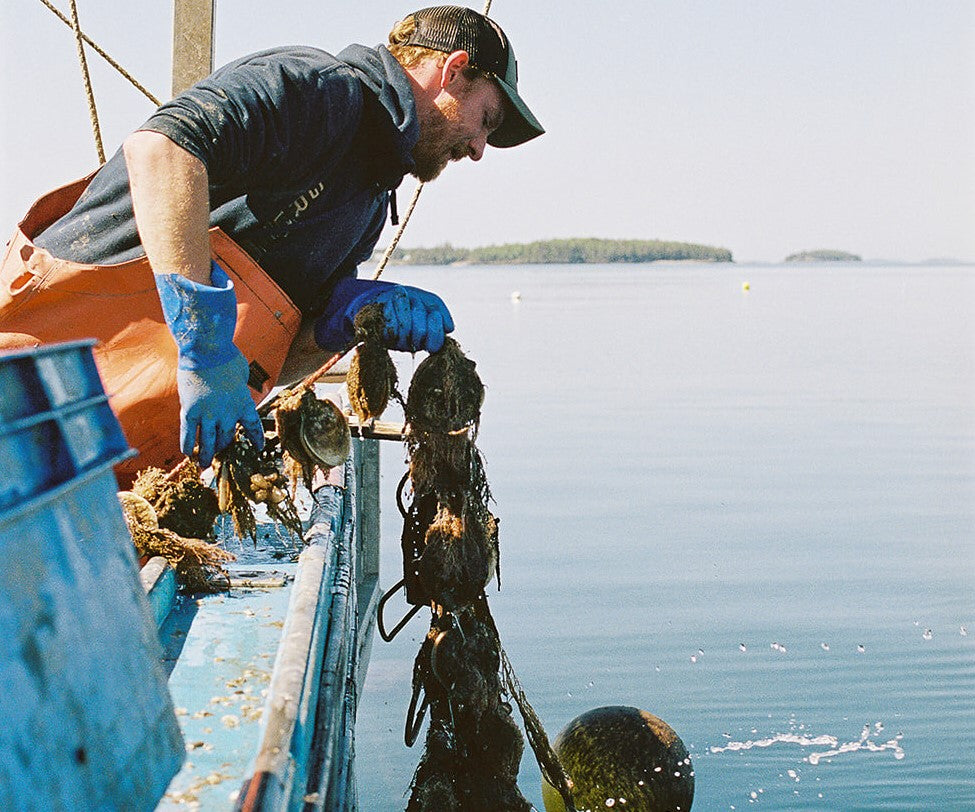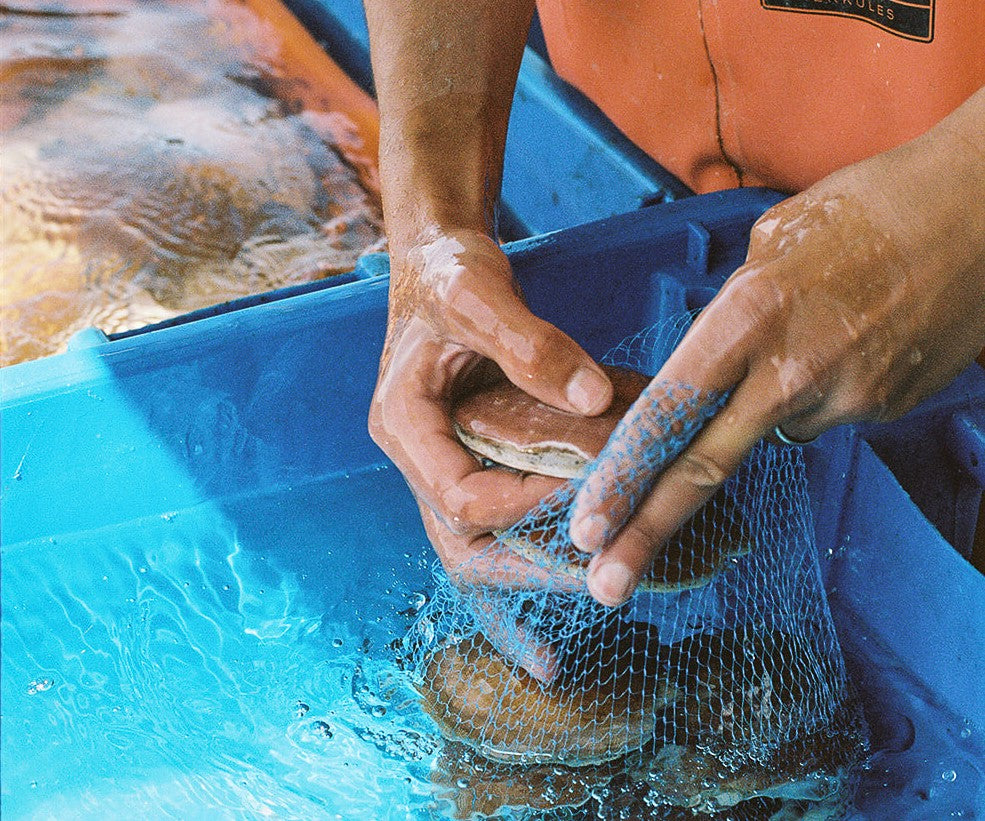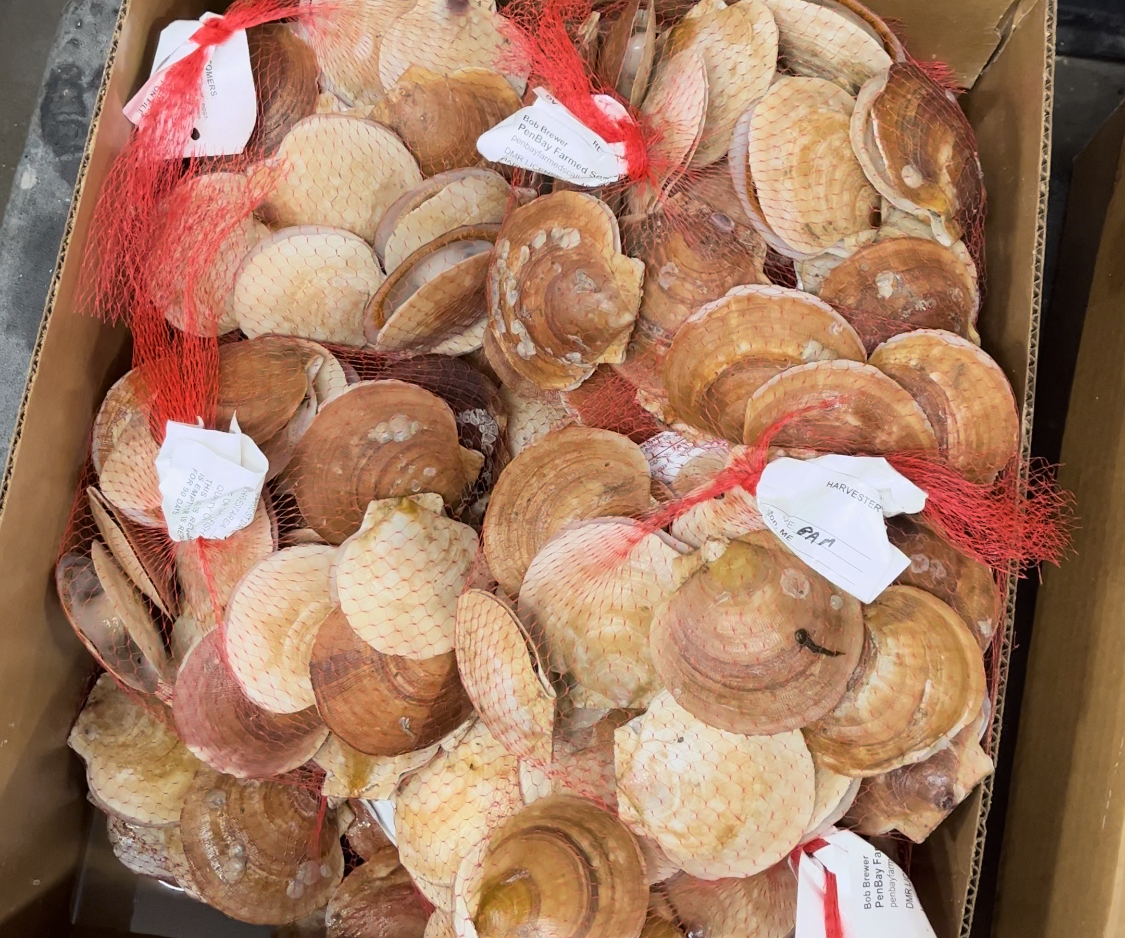Live Sea Scallops from Penobscot Bay, ME
$109.00
Please select all options.
Pre-Order for Delivery on Friday, August 30th or Saturday, August 31st
Live scallops are, well, lively and slightly open shells are completely normal! Store in the refrigerator under a cool, damp towel in a closed lid container. Best enjoyed by Sunday!
Farm: Vertical Bay in Penobscot Bay, ME
Grower: Andrew Peters
How They Taste: Clean sweetness, with the most beautiful kiss of salinity....the only thing that surpasses it's elegant flavor is the firm tenderness of a scallop so darn fresh!
Here’s how Andrew likes to enjoy his catch whilst on the water: “Most days when we are working on the farm we’ll cook up a few live scallops for lunch. This involves an old coffee percolator, a little salt water, some minced garlic in olive oil, and a little white wine. We cook them until the scallop releases from the shell, pinch off the black belly and enjoy!”
How They're Grown: Vertical Bay harvests line grown Sea Scallops using a method called “ear hanging” that was originally developed in Japan, and adapted for Maine waters.
After collecting wild scallop spat through the fall, the babies are brought back to the farm in the spring to spend 9-12 months in lantern nets. The crew then grades and sorts their crop and starts the “ear hanging” process - this is where typical scallop farming takes an interesting turn, as inspired by their Japanese studies. Ear hanging involves drilling a small hole in the hinge of each scallop shell and then pinning the scallops in pairs to a line that hangs vertically in the water column. This process provides each scallop with ample space to clap, feed, and grow, yielding a deep shell and plump meat. After a year on the ear hanging lines, the scallops are harvested at peak quality in the Spring and Summer. The whole grow-out process from spat-to harvest can take up to three years!
Why They're Unique: The farm sits at the confluence of the Eastern and Western Maine Coastal Current. The scallops are suspended in the water column ~30’ below the surface and sit at the nexus of these two oceanographic features. This places them squarely in the optimal temperature, salinity, and light zone, providing them with ample nutrients and ideal conditions to produce a flavorful and tender meat that has a texture unlike bottom grown scallops!

